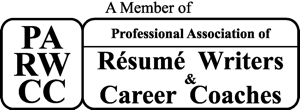iStock | hirun
There are a lot of strikes going on right now. The Writer’s Guild of America, The Screen Actors Guild of America, United Auto Workers, Airline Pilots, Hotel Workers, and Flight Attendants, to name a few. These strikes are not just about money. At the heart of these actions is an existential fear their professions are doomed.
Actors and writers fear Artificial Intelligence. Auto workers fear automation. Pilots fear self-piloting planes. Hotel workers fear they will be stuck in poverty. X workers fear the math won’t add up in their favor. The United States Bureau of Labor Statistics predicts the future decline or growth of labor sectors down to the number (results may vary).
If you think you’re in a doomed industry, company, or position, be proactive, but don’t panic.
1. Change is evolution, not revolution. Societal changes take time, including work. Think of a Town Crier, who yelled the news to whole villages as far back as ancient Roman times and as recent as every British royal announcement (and still exists as a ceremonial position and bizarre sub-culture). Now we have the internet and, by last count, 5.18 billion town criers who can yell to the whole world 24/7. Did the job really disappear or did it transform little by little until it became social media? You have transferrable skills that you can use to skip along the lily pads as required by any major changes in your status (aka doom).
2. Time is on your side. Once again, be proactive, but don’t be sloppy. You have time to research, formulate a strategic plan, and make big decisions like re-locating or moving in a new direction. Take small steps if you need to, like updating your resume and LinkedIn profile. Those are great ways to see knowledge gaps (resume) and tell your professional story (LinkedIn). After that, raise the stakes by exploring opportunities in your area and beyond. Start make an honest data driven assessment of your job landscape and see where it takes you.
3. Doomed doesn’t mean done. For example, COBOL. Nobody uses that anymore – that’s a dead language, right. The point is, plentiful COBOL developer jobs and positions may be a thing of the past, but people who know COBOL are still in demand, sometimes high demand. Those skills are still needed to maintain systems still running COBOL, update them, or migrate them to new platforms like cloud computing.
4. Doom can be balkanized. Some professions may be balkanized. Here are two examples. Women’s reproductive health care professionals and bail bondsmen. In some states being a reproductive health care doctor, nurse, or worker is a very risky proposition and in some states it’s fine and in (increasingly high demand). In some states bail is now illegal and your chances of working as a bail bondsman is doomed, but in many states it’s business as usual so your industry hasn’t vanished, it’s just moved to another state. If you can move, you can find the markets that still need your skills and experience.
5. You may be able work on a remote basis. When you think about the way you go about finding work, and for whom you will work, you may consider broadening your horizons. Your type of work may be doomed where you live, but there is still a robust need for your services elsewhere that places you in a leveraged position. If you haven’t considered remote work before, circumstances may dictate you seek out new ways to use your skill set and remote work can be a rewarding and lucrative option.
6. Always Be Training. Training, training, training! If you need to learn new skills, learn new skills. Think of it as swimming or drowning. It’s going to end one way or another so you may as well learn to swim. Explore job transition programs and aid from local and state governments, or the federal government. For example, AI. Everybody is justifiably scared AI is coming for their job and they may be right. They’re probably right. However, AI isn’t coming for every job, but it will transform the way things are done globally the same way the personal computer did. People with advanced computer skills had an advantage and people who know how to use AI tools will have an advantage. There is time to learn them, but get cracking!
Philip Roufail contributed to this article.
Scott Singer is the President and Founder of Insider Career Strategies Resume Writing & Career Coaching, a firm dedicated to guiding job seekers and companies through the job search and hiring process. Insider Career Strategies provides resume writing, LinkedIn profile development, career coaching services, and outplacement services. You can email Scott Singer at scott.singer@insidercs.com, or via the website, www.insidercs.com.






